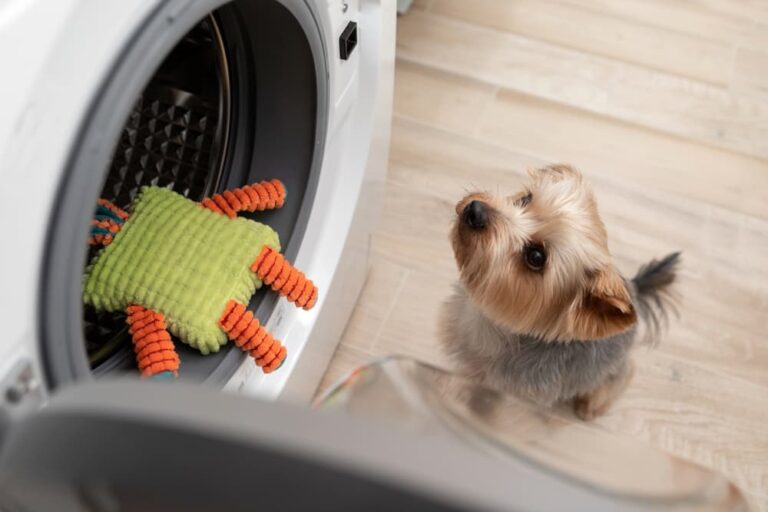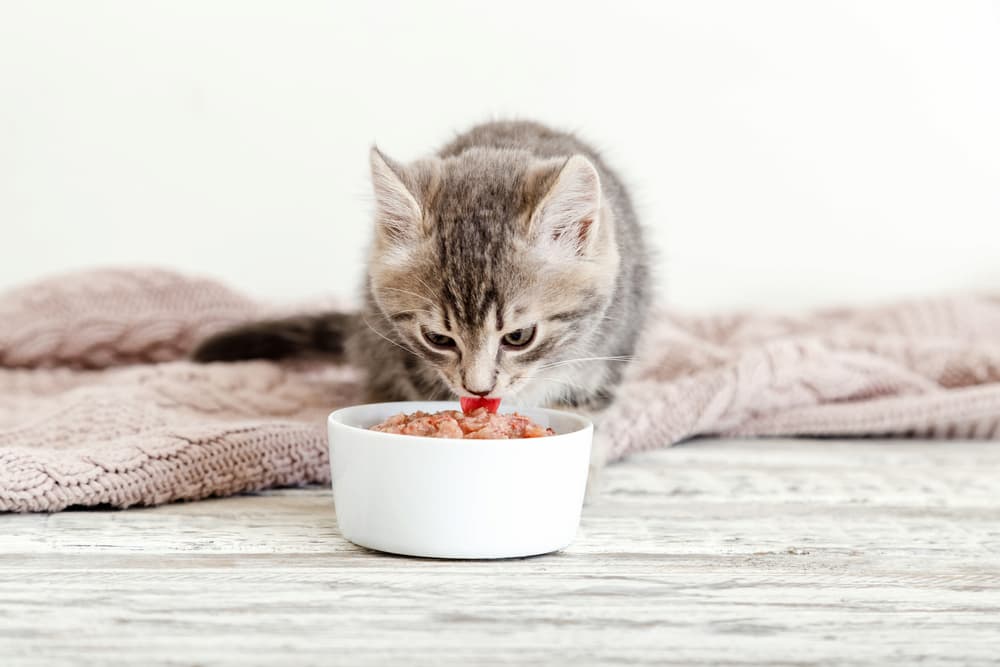How to Wash Dog Toys: 7 Cleaning Tips

With life feeling busier than ever, it’s easy to forget about the basket of dog toys in the corner of your living room. But, just like dog blankets and bowls, if left uncleaned, your furry friend’s toys can get dirty and harbor germs and bacteria. Whether you have one or more dogs, it’s important to keep their playtime as safe as possible by regularly washing their toys.
Dog toys, by nature, go into your dog’s mouths. Renee Rhoades, head dog behavior consultant at R+Dogs, recommends frequently checking them to make sure that they are in both good condition and not dirty. “This means that we aren’t spreading potentially harmful germs into our dogs’ systems and homes.”
If you are wondering how often to wash, or if all of the dog toys—from the squeaky duck toy to that Nylabone—can be cleaned, you’ve come to the right place. Here are some tips for washing dog toys.
Can You Wash Dog Toys?

You can absolutely wash your dog’s toys and do so regularly to keep them clean.
“Cleaning toys is important, especially if food is placed inside them (such as KONGs),” says Dr. Patrik Holmboe, head veterinarian at Cooper Pet Care, a veterinary telemedicine provider in the Netherlands. “They get very disgusting if the food is left to rot, and that certainly isn’t something you want your dog’s mouth around!”
As for other types of toys (cloth, rubber, plastic, rope, plush, etc.), cleaning them depends on the material. Cloth, stuffed plush, and rope toys can be thrown in the washing machine, while plastic or other hard toys can be hand-washed or placed in the dishwasher. The safest bet is always to hand-wash and air dry.
How Often to Wash Dog Toys
The frequency of washing depends on the type of toy, the environment in which they are used, and the number of dogs playing with them.
If you have a toy that is often used with food, such as a lick mat or a treat dispensing toy like Westpaw’s Zogoflex, it must be cleaned right away, according to Rhoades. For rope, cloth or plush toys, she recommends washing weekly or bi-weekly, depending on how many dogs are playing with them and how they are being used.
If your pet likes to bring the toys out into the backyard to play, they get dirtier quicker and need weekly washes. This also helps keep these items safe if you have more than one dog playing, indoors or outdoors. However, once a month may be enough if you have one pet who plays with them inside.
How to Wash Dog Toys: 7 Cleaning Tips

Here are some cleaning tips from the experts.
Hand washing
Washing by hand is the simplest method and gets the job done. “Treating the toy like a food dish usually works wonders,” says Holmboe. You can use a mild soap or dish detergent to scrub the items clean under hot water.
Once clean, air dry like you would with your mugs and plates. Hand washing is ideal for hard toys that contain food and toys that are made with rubber or plastic, including recycled plastic.
When washing toys with squeakers in them, Rhoades warns pet parents to be careful, as “water can get trapped inside and can lead to mold build up.”
Washing Tools
If you are hand-washing, Holmboe recommends using a scrubbing brush or a toothbrush to get to the hard-to-reach places. Rhoades suggests using baby bottle brushes for “cleaning out the nooks and crannies of toys that contain wet foods.”
If the left-over food has settled into any crevices and caked inside the toy, soak the item in warm, soapy water and use a heavy duty sponge to scrub it off.
Laundry Machine-Washing
To clean cloth or rope tug toys, use your washing machine to get them smelling and feeling fresh. Of course, check the label first to make sure they can go in the washing machine.
To prevent the toys from tumbling inside too much, Holmboe recommends placing them in a laundry-bag specifically made for washing machines. It’s usually a small mesh bag with a zipper. Once washed, air dry before handing them back to your pet.
Detergent
A standard laundry detergent or a pet-safe laundry detergent is best for the washing machine. However, Rhoades says using a mild detergent made for babies or sensitive skin can also be used. Avoid any detergent with chlorine bleach, even when diluted, as it is toxic to pets.
Homemade Solution
If using laundry or dish detergent isn’t something you are willing to do, there is a simple alternative. “Vinegar can be a great natural and effective way to clean toys, ” says Holmboe, who recommends mixing a combination of 50 percent white vinegar with 50 percent water.
Make enough solution to fully submerge the toys and soak them for five to 10 minutes. Thoroughly rinse the items and air dry. “The advantage of submersion is that the mixture has time to fully penetrate small cracks and crevices.”
Dishwasher
The water pressure and hot water of the dishwasher, combined with a mild dish detergent, are typically good for getting rid of germs from hard plastic or rubber-type toys, but this method may not always be the best option for cleaning toys.
Holmboe advises pet parents to use judgment when throwing certain toys in the dishwasher. “If you are unsure, it’s best to skip it and simply hand wash.” If the toy has lots of small cracks and crevices, for example, a dishwasher might not be as effective at penetrating the toy and getting it completely clean.
Boiling
If you have a new dog visit, or a foster in the house for a while, you might be concerned about germs spreading. The best way to fully sanitize a toy is to boil it in hot water for five to 10 minutes, says Holmboe. “The boiling water will seep into everywhere it needs to go, and give a thorough killing of bacteria and other germs.”
The only catch, he adds, is that “the toy must be able to withstand the high heat.” Read the toy’s label, or use your own judgment, when deciding to go with this method of cleansing toys.
Washing Dog Toys: Other Advice

Even though your dog’s toys may look clean to the naked eye, you don’t know what’s lurking on them. Sometimes, a simple sniff test can determine when a cloth or rope toy needs a refresh.
Despite your best efforts to clean and keep your pet’s toys in good condition, there comes a time when you have to part with that raggedy plush toy with missing ears, frayed rope toy, or chewed up rubber ball.
“Check all of your dog’s toys for any abnormalities, especially when it comes to toys that potentially could be swallowed,” suggests Rhoades. “Some toys can keep going for a long period of time and some dogs like tearing up soft toys, but when it comes to rubber toys, it is best to throw them away when they start to break.” If your dog consumes any of these broken parts accidentally, it could mean a trip to the ER.
Cleaning dog toys doesn’t need to be an added chore. You can simply do a weekly check of all of their regularly used items, and throw them in the washing machine along with your clothes.






